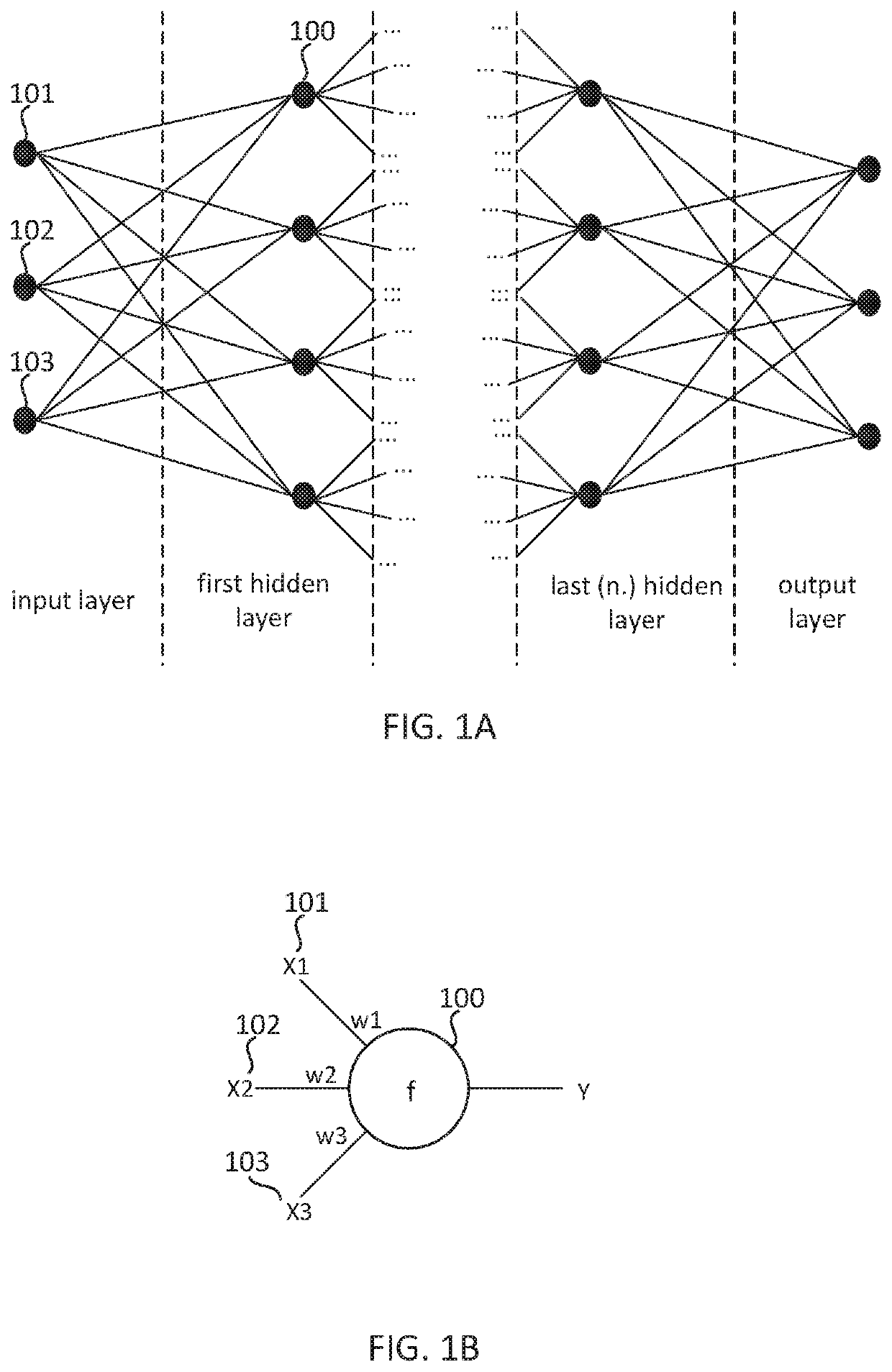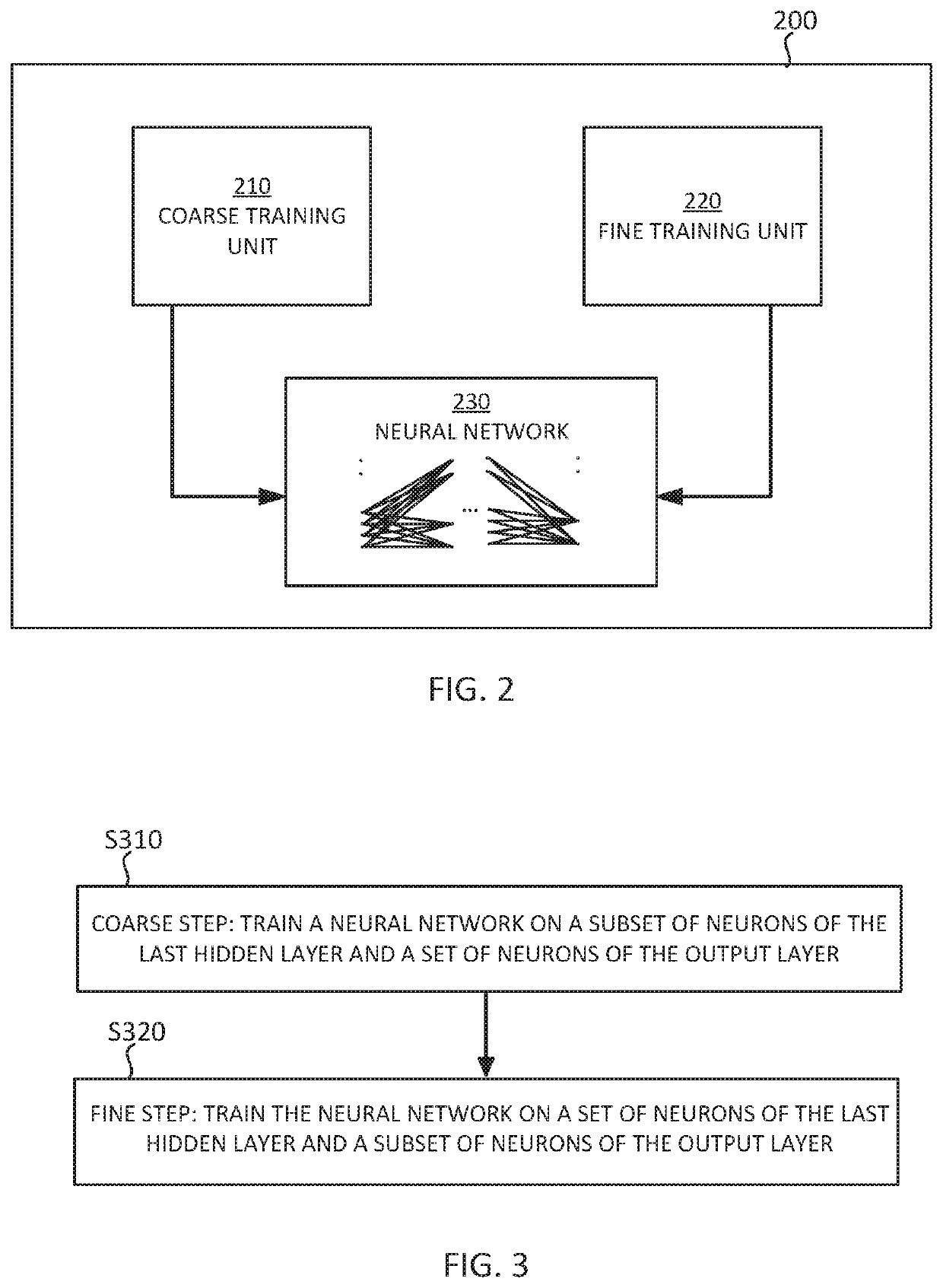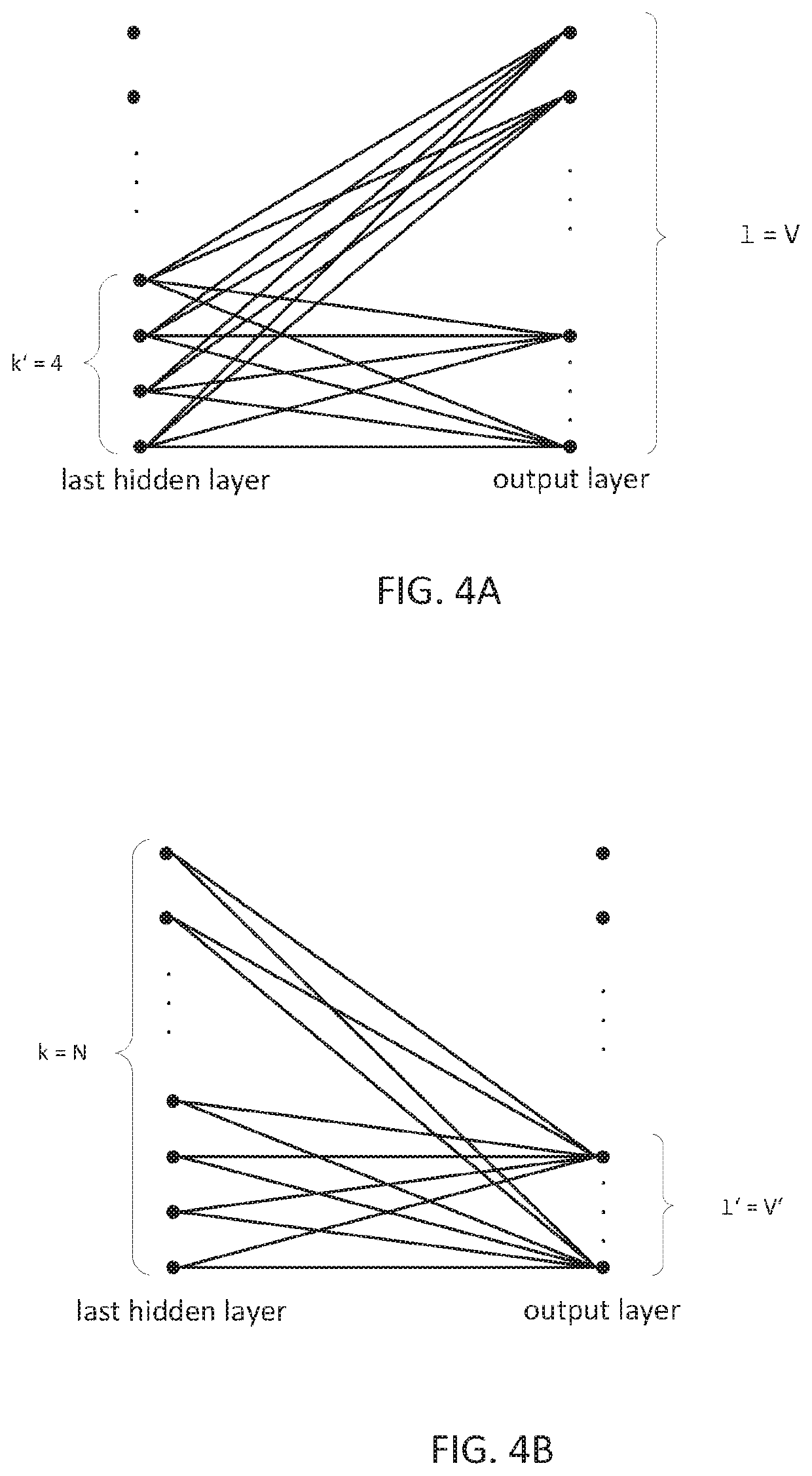Classification apparatus and method for optimizing throughput of classification models
a classification apparatus and model technology, applied in the field of classification model training, can solve the problems of increasing computational burden, low throughput, and large vocabulary set, and achieve the effects of reducing the computational burden of classification, speeding up the training time and improving the training of a classification model
- Summary
- Abstract
- Description
- Claims
- Application Information
AI Technical Summary
Benefits of technology
Problems solved by technology
Method used
Image
Examples
Embodiment Construction
[0027]Embodiments of the present disclosure are described with reference to the figures. It is noted that the following description contains examples only and should not be construed as limiting the present solution. In the following, similar or same reference signs indicate similar or same elements or functions.
[0028]FIG. 1A is an illustration of a general neural network comprising an input layer, several hidden layers, and an output layer. The neural network may comprise an input layer having at least one neuron, one or several hidden layers, each hidden layer usually having multiple neurons, and an output layer having again at least one neuron. In this matter, a neuron is a node of the neural network, wherein a collection of neurons, i.e. nodes, forms a layer, for example, an input layer, a hidden layer, or an output layer. In FIG. 1A, the input layer and the output layer each include three neurons, respectively. However, this is only illustrative, and the input layer and output ...
PUM
 Login to View More
Login to View More Abstract
Description
Claims
Application Information
 Login to View More
Login to View More - R&D
- Intellectual Property
- Life Sciences
- Materials
- Tech Scout
- Unparalleled Data Quality
- Higher Quality Content
- 60% Fewer Hallucinations
Browse by: Latest US Patents, China's latest patents, Technical Efficacy Thesaurus, Application Domain, Technology Topic, Popular Technical Reports.
© 2025 PatSnap. All rights reserved.Legal|Privacy policy|Modern Slavery Act Transparency Statement|Sitemap|About US| Contact US: help@patsnap.com



